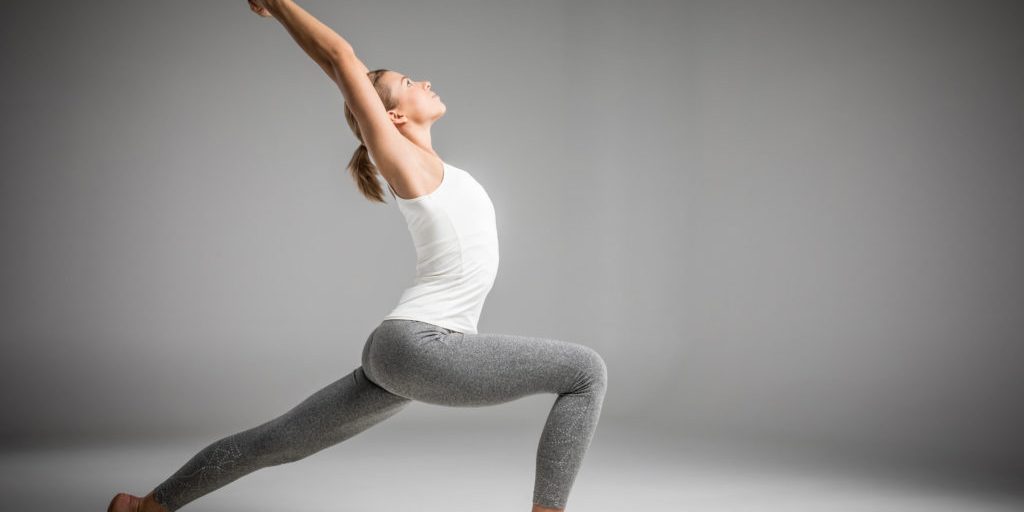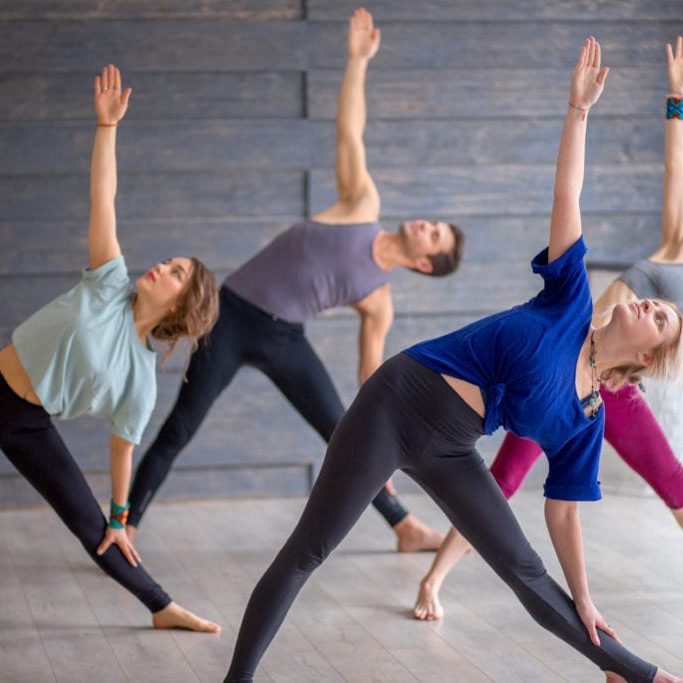Vinyasa Yoga
Though perhaps not the most well known of all the strands of yoga, the practise of vinyasa yoga is an increasingly popular way for individuals to connect the mind and the body through breathwork and posture. Its concentration relies largely on the breath leading the body through various poses. It can be hugely beneficial for individuals who struggle with change or people wanting to find a new way to ground themselves through a frequent workout.

What is Vinyasa yoga?
Vinyasa Yoga is a practice of yoga focusing on ‘flow’, emphasising the connection of breath with the body as it moves between yoga poses. Described as ‘meditation in motion’, yoga poses are linked together in a smooth motion of movements, shifting seamlessly from one pose to the other and using the natural, thoughtful breathing as the anchor for each action.
The word ‘vinyasa’ comes from Sanskrit, the official language of yoga. Essentially, the word translates to ‘variation within prescribed parameters’ and ‘to place the body in a special way’. The practice of Vinyasa is all about allowing the breath to lead the body through the motions of yoga. There is consciousness in the movement because the physical and spiritual should be connected as one working entity, guiding the body through each position. The breath is moving the body, not the other way around.
Vinyasa yoga came from the Ashtanga yoga practice, developed by Tirumalai Krishnamacharya and Patthabi Jois. It differed from Ashtanga by focusing not on a specific sequence of poses done in one particular way but leaving freedom to move, with constant, deep breathing centring the postures rather than the breath coming secondary to the posture.
Three central components form the basis for Vinyasa yoga:
- Continuous flow and movement
- Ujjai Breath - a breathing technique, sometimes known as ‘ocean breathing’, where the breath begins in the diaphragm area/lower belly, rising through the ribs then up into the upper chest and throat. It literally translates to ‘victorious breath’.
- Bandhas - The act of locking particular areas of the body to regulate and focus your energies into other parts of the body.
The central philosophy of vinyasa yoga is this: change is all around us, and it can be difficult to cope with, mainly when changes are out of our control. The practice of Vinyasa encourages an individual to accept the change that we see around us and to embrace it, rather than shy away and worry about it. The variation of routines that you’ll find in a vinyasa yoga class emphasise the need to accept change with open minds and bodies. As our bodies move through routines that we aren’t expecting, we’re encouraged to embrace each pose and maintain our breathing and posture.
What to expect from a vinyasa yoga session
Vinyasa is all about connecting the breath with the body – so no two classes you attend are ever going to be the same. It’s all about variation rather than mastering specific poses or routine. No instructor will run a session the same way or create the same flow of energy, so you’ve got to be open to whatever a class might throw at you.
If not provided for you, make sure you bring a yoga or workout mat to ensure you’ve got a soft surface on which to practice. Bring water and potentially a towel with you. Vinyasa is characterised by being one of the more active yoga practices, so you might come out a bit sweaty. This yoga practice is far more likely to get your heart rate going, so make sure you're wearing suitable clothing, like soft materials and stretchy leggings or yoga pants.

Vinyasa is different to other ‘fixed’ forms of yoga-like Bikram, where the same postures are used in each class. However, you are likely to find these four positions incorporated into your routine:
- Sun Salutation – Twelve flowing yoga poses generally designed to warm up the body before a session.
- Upward Facing Dog – Like Cobra, the hips are lifted from the floor and back indented, neck extended upwards.
- Downward Facing Dog – Body forms a triangle shape with your hands and feet on the floor.
- Chaturanga – Otherwise known as the four-limbed staff pose or plank halfway down.
The instructor will guide you through the poses without much warning about what’s coming, encouraging your body to remain calm and stable as you move between each pose.
One key difference to other practices of yoga is that Vinyasa increases your heart rate and generates heat as you move. Depending on your ability and what kind of class you attend, the session could be more dynamic and intensive, or it could be gentle and reflective. This type of yoga a cardio workout rather than a stretching workout, so expect your body to be working harder as you transition into new poses.
Vinyasa yoga sessions will be based on your fitness level and your ability to perform particular yoga poses. Though it’s available and open for anyone wanting to perform yoga, you may find the classes more soothing and accessible if you have some experience with yoga postures. Nevertheless, there is something in a vinyasa yoga class for everyone.
Depending on the class, you’ll average around 26 poses during your session in Vinyasa yoga, and it can be any length from half an hour to ninety minutes.
Effects and benefits of vinyasa yoga
Yoga is largely considered one of the best practices to improve mental, spiritual and physical health – and it brings plenty of benefits with it. Increasingly popular in the Western world, where anxiety and stress are common, vinyasa yoga brings health benefits to its regular practitioners.
Individuals at any fitness level can get engaged with yoga. Whether you want to improve your flexibility, increase stamina, or just want to get more in touch with your body and spirit through the practice of yoga, there is a practice that suits your sensibilities.
Some of the top benefits of vinyasa yoga include:
- Increase balance in the body and improve awareness of your centre of gravity
- Can reduce the possibility of repetitive strain injuries from fixed yoga routines
- Helps to build strength across the body
- Improves general flexibility in key areas of the body
- Improved stability – vinyasa yoga, in particular, has been shown to help an individual improve a sense of balance and stability
- Lower feelings of stress and anxiety through meditative breathing practices and focusing on grounding the mind in the present
- Helps to improve posture and the alignment of the spine and hips
- Promotes improved circulation of the blood around the body and the normal function of the nervous system
- Good for cardiovascular health as a more active form of yoga
- Increase energy levels in the body through the better flow of blood and oxygen through the body
- Can help improve sexual pleasure and sensation of orgasm with emphasis on exercises for the pelvic floor
